Introduction: Everest Mani Rimdu Festival Trek 2024-2025
Mani Rimdu is a festival of Tibetan Buddhism that takes place in the Sherpa communities of Nepal and the Himalayan regions of Tibet, Bhutan, and India. The festival typically includes rituals, dances, and teachings, and is intended to purify and strengthen the spiritual power of both the individual participants and the community as a whole. It is traditionally performed by the Sherpa community, but it is also becoming increasingly popular among other ethnic groups and tourists. The festival is typically held in the fall, usually in October or November.
An annual celebration of Tibetan Buddhism called Mani Rimdu is conducted in Nepal's Sherpa area. The event is observed in Padmasambhava's honor since he is credited with introducing Buddhism to Tibet in the eighth century. Thousands of people from all around Nepal and the surrounding area generally attend the celebration, which combines religious rites, mask dances, and other cultural customs. The "drama of the conquest of the Dharma," which involves people performing a series of ceremonies and dances to recreate Buddhism's victory over the local Bon religion in Tibet, is the festival's main event. The celebration normally lasts a few days and takes place in the autumn.
The main rites and performances usually take place on the final three days of the festival, which lasts nine days in total. The monks conduct a number of rituals on the first day of the festival to purify the monastery and get ready for the activities that will take place. The "drama of the victory of the Dharma," which consists of a sequence of masked dances that recreate the victory of Buddhism over the local Bon religion in Tibet, is performed on the second day.
The "drama of the victory of the Dharma" and the "drama of the four relatives," which are a sequence of rites and dances honoring the four close relatives of the Buddha, are performed on the third day, which is the festival's primary day (his father, mother, wife, and son).
Teachings by lamas, puja (prayer) rites, and the construction of sand mandalas are some of the additional festival events. The festival is a significant occasion for the neighborhood as well, and food and craft stalls are frequently set up.
If you are planning to attend the Mani Rimdu festival as a tourist, there are a few things to keep in mind to ensure that you have a respectful and enjoyable experience.
- Dress modestly and appropriately: Out of respect for the religious nature of the festival, it is important to dress modestly and cover your shoulders and legs. Avoid wearing revealing clothing or anything that may be considered offensive.
- Be mindful of your behavior: A festival is a sacred event for the local community, so it is important to be mindful of your behavior and avoid being loud or disruptive. Show respect for the rituals and ceremonies that take place and refrain from taking photographs or videos during certain parts of the festival.
- Be respectful of local customs: The Mani Rimdu festival is a traditional event, so it is important to be respectful of local customs and traditions. Avoid acting in a way that may be considered rude or disrespectful.
- Be prepared for the weather: The festival takes place in the Himalayan region, so be prepared for cold and changeable weather. Make sure you have warm clothing and appropriate footwear.
- Be open-minded: The Mani Rimdu festival is a unique and culturally rich experience, so be open-minded and try to learn as much as you can about the customs, beliefs, and practices of the local community.
By following these guidelines, you can ensure that you have a respectful and enjoyable experience at the Mani Rimdu festival, and you will also be able to appreciate the local customs and traditions.
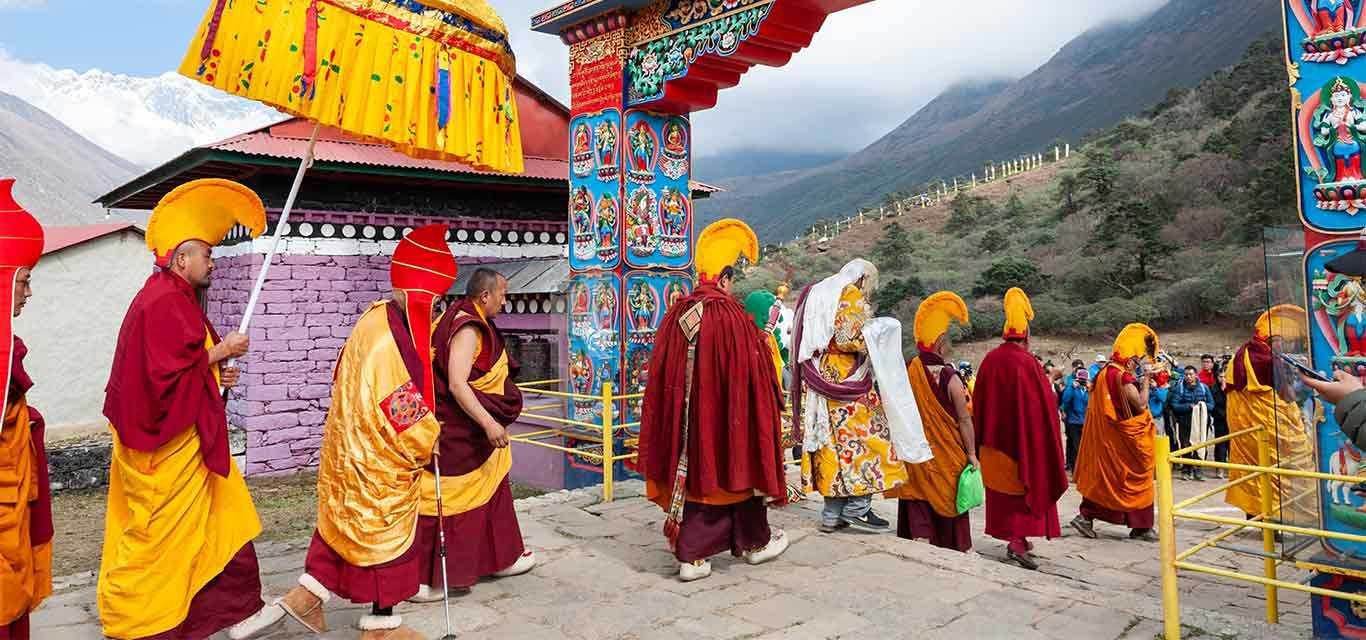
Everest Mani Rimdu Festival Trek Altitude and Distance Coverage
Day | Activity | Altitude (m/ft) | Distance (km/miles) | Duration (hours) | Altitude Gain (m/ft) | Altitude Drop (m/ft) |
1 | Arrival in Kathmandu and transfer to hotel | 1,350 m / 4,430 ft | - | - | - | - |
2 | Kathmandu sightseeing and trek preparation | 1,350 m / 4,430 ft | - | - | - | - |
3 | Flight to Lukla , trek to Phakding | ,2,860 m/9,383 ft, 2,610 m / 8,563 ft | 9 km / 5.6 miles | 3-4 hrs | +30 m / 98 ft | -260 m / 853 ft |
4 | Trek from Phakding to Namche Bazaar | 3,440 m / 11,287 ft | 11 km / 6.8 miles | 5-6 hrs | +830 m / 2,723 ft | -0 m / 0 ft |
5 | Acclimatization day in Namche | 3,440 m / 11,287 ft | - | - | - | - |
6 | Trek from Namche Bazaar to Tengboche | 3,860 m / 12,664 ft | 9.2 km / 5.7 miles | 4-5 hrs | +420 m / 1,378 ft | -0 m / 0 ft |
7 | Mani Rimdu festival at Tengboche Monastery (blessing ceremony) | 3,860 m / 12,664 ft | - | - | - | - |
8 | Second day of the festival: witness Cham mask dance | 3,860 m / 12,664 ft | - | - | - | - |
9 | Third day of the festival: Jinsakat closing ceremony | 3,860 m / 12,664 ft | - | - | - | - |
10 | Trek from Tengboche to Dingboche | 4,350 m / 14,272 ft | 10.5 km / 6.5 miles | 4-5 hrs | +490 m / 1,608 ft | -0 m / 0 ft |
11 | Acclimatization/rest day in Dingboche | 4,350 m / 14,272 ft | - | - | - | - |
12 | Trek from Dingboche to Lobuche | 4,910 m / 16,109 ft | 8.5 km / 5.3 miles | 4-5 hrs | +560 m / 1,837 ft | -0 m / 0 ft |
13 | Trek from Lobuche to Gorak Shep, then to Everest Base Camp | 5,164 m / 16,942 ft 5,364m/17,598ft | 15 km / 9.3 miles | 6-7 hrs | +454 m / 1,490 ft | -0 m / 0 ft |
14 | Trek to Kala Patthar then to Pheriche | 5,545m/18,192ft 4,280 m / 14,042 ft | 14 km / 8.7 miles | 7-9 hrs | +181 m / 594 ft | -1,265 m / 4,150 ft |
15 | Trek to Namche Bazaar | 3,440 m / 11,287 ft | 15 km / 9.3 miles | 5-6 hrs | +0 m / 0 ft | -840 m / 2,756 ft |
16 | Trek to Lukla | 2,860 m / 9,383 ft | 19 km / 11.8 miles | 6-7 hrs | +420 m / 1,378 ft | -1,000 m / 3,281 ft |
17 | Fly back to Kathmandu | 1,350 m / 4,430 ft | - | - | - | - |
18 | Transfer to airport and fly home | - | - | - | - | - |
How is the Mani Rimdu festival celebrated?
The Mani Rimdu festival is celebrated over several days and typically includes a series of rituals, dances, and teachings. The specific details of the festival may vary depending on the location, but generally, the festival includes the following elements:
- Opening ceremony: The festival begins with an opening ceremony that includes prayers, offerings, and the raising a ceremonial flag.
- Mask dances: One of the main highlights of the festival is the series of mask dances, which are performed by local monks or laypeople. The dances depict various aspects of Tibetan Buddhism, including the protection of the community, the victory of good over evil, and the attainment of enlightenment.
- Oral transmissions: During the festival, oral transmissions are given by the lama or spiritual teacher in charge of the festival. These transmissions are considered to be sacred teachings and are intended to purify and strengthen the spiritual power of both the individual participants and the community as a whole.
- Fire puja: A fire puja is performed during the festival to purify the environment and to dispel negative energies.
- Closing ceremony: The festival concludes with a closing ceremony that includes prayers, offerings, and the taking down of the ceremonial flag.
In general, the festival is a time for spiritual renewal, purification, and the accumulation of merit. It is also an opportunity for the community to come together and celebrate their shared culture and traditions.
Who celebrates the Mani Rimdu festival?
Mani Rimdu festival is traditionally celebrated by the Sherpa communities in Nepal, the Himalayan Regions of Tibet, Bhutan, and India. It is an important religious event for the Sherpa people, and it is typically organized and performed by local monasteries or lamas. The festival is also becoming increasingly popular among other ethnic groups and tourists, and as a result, it is being celebrated by a wider range of people from different parts of the world.
During the festival, many people from the surrounding villages and towns come to attend the rituals and ceremonies, and it becomes an important social event for the community where people come together to meet, celebrate and share their culture and traditions. The festival is also a significant opportunity for the local community to showcase their customs, beliefs, and practices to the visiting tourists.
The Mani Rimdu festival falls in which month, and is Everest trekking ideal during this period?
The Mani Rimdu festival is usually celebrated in October or November, and the exact date of the festival depends on the lunar calendar. It is hosted in Tengboche Monastry.
Regarding trekking to Mount Everest, the best time to trek to Mount Everest is typically considered to be between September and November. During these months, the weather is usually clear and dry, with less chance of rain, snow, or fog, which makes for better visibility of the mountain. However, trekking during Mani Rimdu festival could be challenging since many routes and accommodations will be occupied by festivalgoers. The trail can be more crowded and accommodations may be harder to find. It's a good idea to plan ahead and book your trekking and accommodation well in advance if you plan to attend the festival.
Important Note: Rituals of Mani Rimdu festival.
- (The Sand Mandala) Creation of the Buddha of Kindness, the main idol of Mani Rimdu. made from colored sand.
- (Wong of Empowerment) The sacred Mani Rilwu (sacred pills) and Tshereel (pills for long life) are given to everyone attending.
- (The Dances of Chham) Symbolic demons are conquered, chased away, or transformed into dancers who perform the Protectors of Dharma Divine Dance, not for entertainment.
- (Ser-Kyem) A Buddhist consultant makes tea offerings and takes "refuge" in the Lama (spiritual guide), Yidam (personal deity), and Khandro (wisdom Dakini).
- (The Fire Puja Jinsak) An offering to Agni (the god of fire) and to the gods of the mandala to allay all harm in the world. After the destruction of the sand mandala, sand is given as an offering to the serpent gods.
- (Chhingpa) Dance of the Four Protecting Things, defending the Buddhist faith against attack by demons.
Why Trekking Planner Nepal for Everest Mani Rimdu Festival Trek ?
So, Trekking Planner Nepal presents the Mani Rimdu Festival Trek all-inclusive package, with no hidden cost except the excluded cost. In this trekking package, Trekking Planner Nepal covers permits, accommodations, maps, itinerary and the guide and porters and other services mentioned as per the itinerary.
Check the itinerary, trekking maps, suggested gear lists carefully before booking the package. Always check what the package covers when you pay for the Everest Mani Rimdu Festival Trek, and check all the things included and excluded. We are available 24/7 for queries regarding the trek.
Outline Itinerary for Everest Mani Rimdu Festival
Day 1:Arrival in Kathmandu and transfer to hotel
Day 2:Kathmandu Sightseeing and Trek Preparation
Day 3:Kathmandu to Lukla by flight, then trek to Phakding.
Day 4:Trek from Phakding to Namche Bazaar.
Day 5:Acclimatization Day in Namche
Day 6:Trek from Namche Bazaar to Tengboche.
Day 7:Mani Rimdu festival at Tengboche Monastery Wang: blessing ceremony.
Day 8:The festival's second day. Witness the Cham mask dance.
Day 9:Third day at the festival. Witness the Jinsakat closing ceremony.
Day 10:Trek to Dingboche.
Day 11:Acclimatization day/Rest day Dingboche.
Day 12:Trek to Lobuche.
Day 13:Trek to Gorakshep & trek to Everest Base Camp.
Day 14:Trek to Kala Patthar & Pheriche.
Day 15:Trek to Namche Bazaar.
Day 16:Trek to Lukla.
Day 17:Fly back to Kathmandu.
Day 18:Transfer to the airport and fly home.


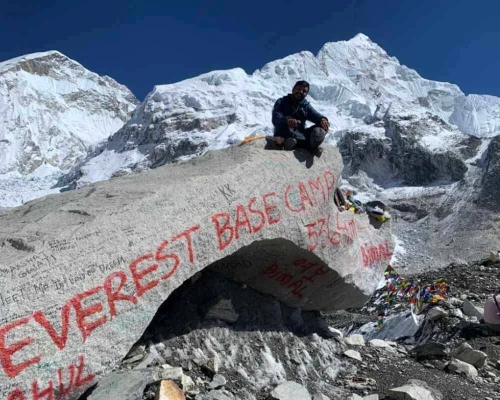
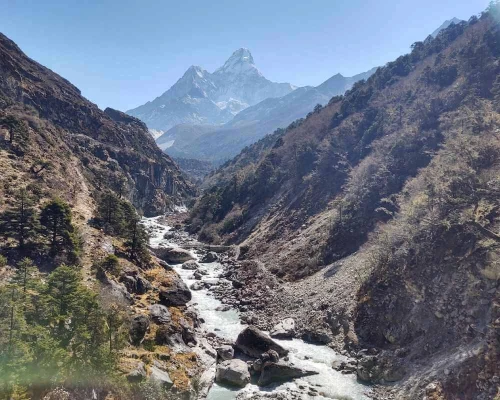
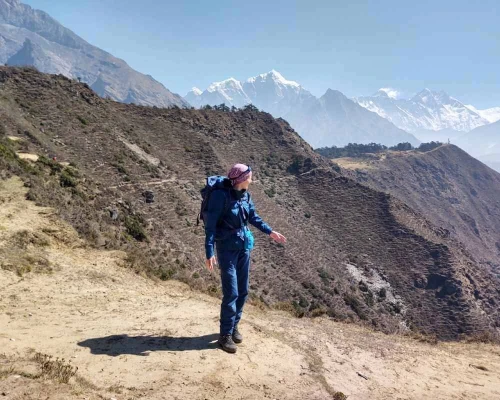
.webp)
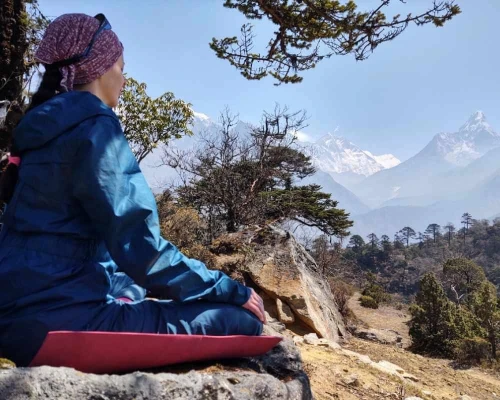
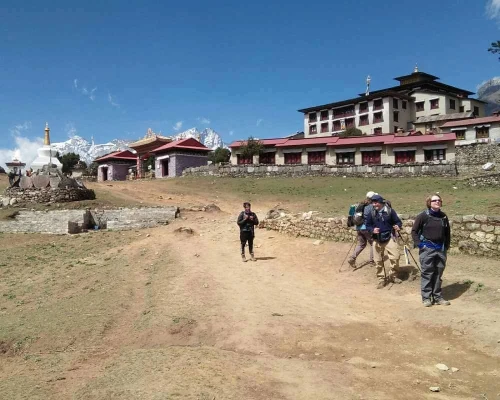

 General
General Upper Body
Upper Body Lower Body
Lower Body Other Essentials
Other Essentials


